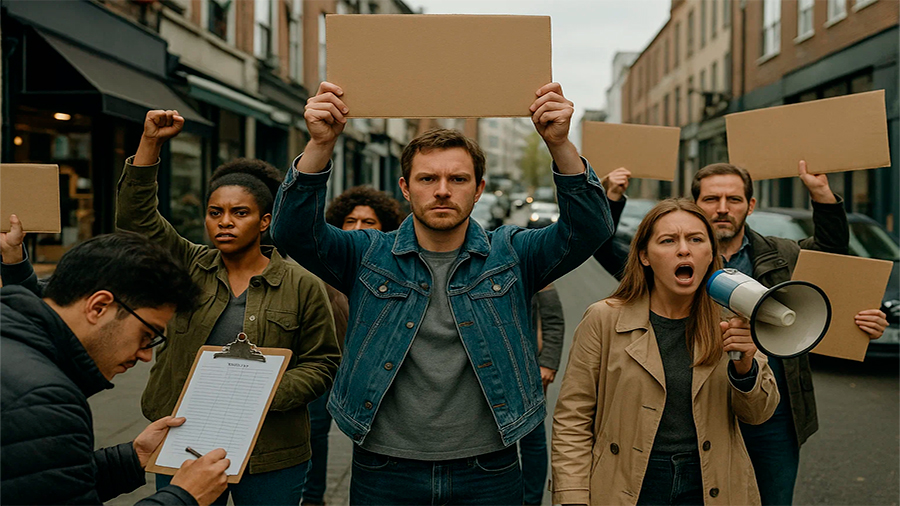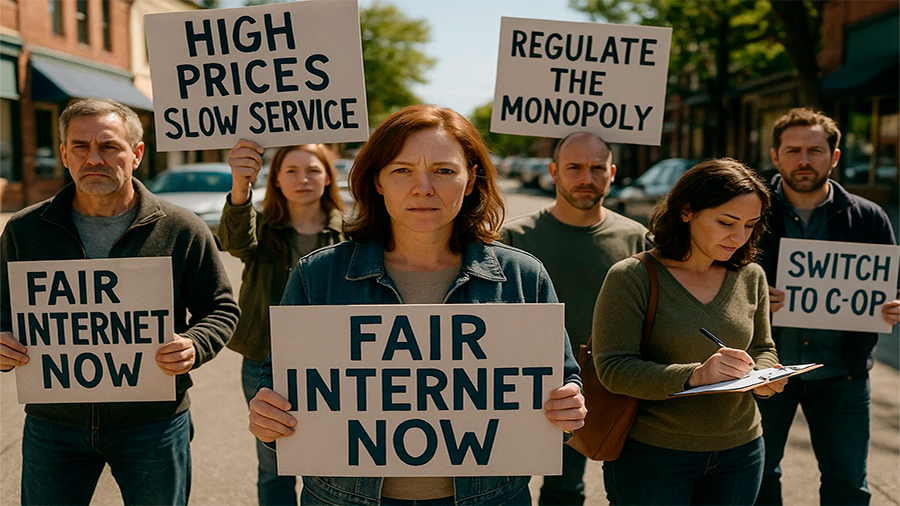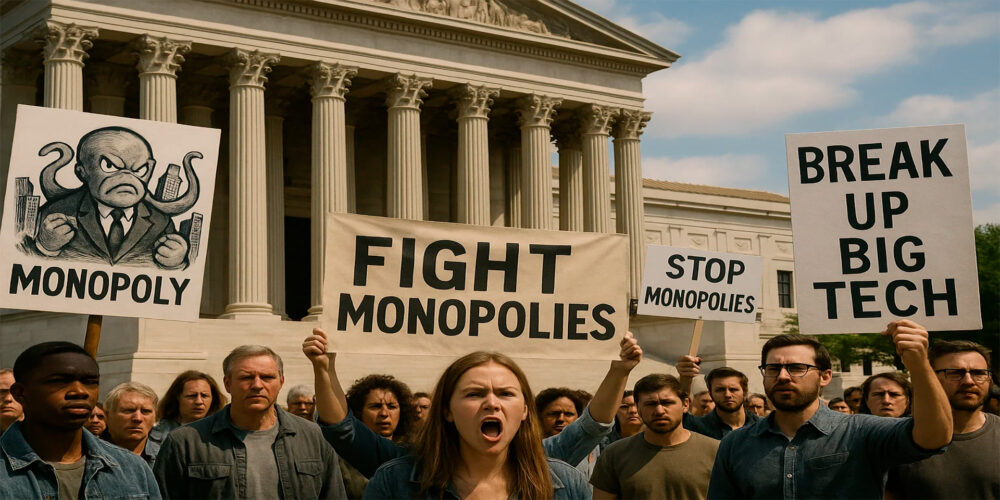How to Fight Monopolies: Strategies for Governments and Citizens
Monopolies are not abstract ideas. They are real companies with the power to raise prices, limit competition, and shape policy. For governments, this creates stagnant markets and weakened innovation. For citizens, it means fewer choices and higher costs. Combating monopolies is not simple. It requires action from both regulators and the public. Laws, enforcement, and consumer behavior all play a role. The goal is balance: keeping efficiency while preventing abuse. Understanding how governments and citizens can push back helps restore fairer, more dynamic markets.
Why Monopolies Are Harmful When Left Unchecked
Some argue monopolies bring efficiency through economies of scale. But unchecked monopolies tend to weaken markets. They block new entrants, reduce innovation, and keep prices high. Firms with dominant positions use profits to build barriers against competitors, entrenching their control. Beyond economics, monopolies influence politics, lobbying to protect their dominance. The result is not just limited competition but broader social harm: inequality rises, wages stagnate, and trust in the system erodes. Over time, monopolies that are not challenged create fragile economies dependent on a single player. This is why proactive resistance is essential.
The Cycle of Control
Monopolies do not just exist—they reinforce themselves. Profits are used to buy rivals, shape regulation, and block alternatives.
Government Strategies to Break Monopoly Power
Governments hold the most direct tools for reining in monopolies. Antitrust laws, regulation, and policy reforms can prevent excessive concentration. Historically, decisive government action has reshaped entire industries, from railroads to telecoms. But success requires political will. Monopolies lobby heavily, often slowing enforcement. Even so, governments can act by blocking mergers, setting price controls for essential services, and creating public alternatives. Supporting startups and cooperatives also helps diversify markets. Effective action involves not just punishing monopolistic behavior but building ecosystems where fair competition thrives.

Common Government Tools Against Monopolies
| Strategy | How It Works | Outcome |
|---|---|---|
| Antitrust enforcement | Breaks up or prevents mergers | Restores competition |
| Price regulation | Limits exploitation in key sectors | Protects consumers |
| Startup incentives | Tax breaks, grants, incubators | Encourages new entrants |
| Public options | Government-backed alternatives | Creates consumer choice |
Citizen Strategies to Push Back
Citizens may not write laws, but their actions matter. Every purchase supports or challenges monopoly power. Choosing small businesses, cooperatives, or alternative platforms reduces dependency on dominant firms. Citizens can also organize campaigns, file petitions, and push regulators to act. Public pressure often drives policy when governments hesitate. Collective action, such as joining lawsuits or unions, strengthens bargaining power. Transparency efforts—such as exposing unfair practices—make it harder for monopolies to operate unchecked. No individual can dismantle a monopoly, but collective consumer and civic behavior amplifies pressure for change.
Everyday Resistance
Even small decisions—such as avoiding dominant platforms when alternatives exist—send signals that demand for diversity is real.
Risks and Challenges in Fighting Monopolies
Challenging monopolies is never simple. Legal cases can take years, and large companies adapt quickly. Regulators may lack resources or independence. Consumers often face trade-offs: alternatives may be less convenient or more expensive. Governments risk political backlash when enforcement is painted as anti-growth. Monopolies themselves argue they create jobs and efficiency, making interventions controversial. But ignoring monopolies carries greater risks: stagnant innovation, higher costs, and entrenched inequality. Recognizing these challenges does not mean surrender. It means designing smarter strategies that account for both legal and social obstacles.
Challenges in Combating Monopolies
| Challenge | Impact | Possible Response |
|---|---|---|
| Lengthy legal battles | Delays enforcement | Streamline court processes |
| Political lobbying | Influences regulation | Strengthen transparency rules |
| Consumer habits | Reinforce monopoly dominance | Promote awareness campaigns |
| Global reach | Limits national oversight | Encourage international cooperation |
Citizen Action in a Local Market
Picture a town with one internet provider. Prices rise each year while service quality declines. People feel trapped. A group of residents organizes a campaign, publishing complaints in local media and filing petitions with regulators. Some switch to a cooperative provider, even though it costs more. Combined, these actions push regulators to fine the monopoly and open access to new competitors. Within a year, prices stabilize and quality improves. Citizens alone did not dismantle the monopoly, but their pressure created the momentum for regulatory change.
The Lesson
Citizen action may be small, but when amplified, it nudges governments to intervene and break monopoly dominance.

Comparative Narrative: Two Countries, Two Outcomes
Telecom markets show clear contrasts. In one country, regulators blocked mergers early, ensuring multiple providers remained active. The government invested in infrastructure that competitors could access. Consumers enjoyed lower prices and better service. In another country, regulators hesitated. The dominant firm bought rivals, eventually controlling nearly all broadband and mobile services. Prices rose, innovation slowed, and complaints piled up. When action finally came, the monopoly was deeply entrenched, politically powerful, and nearly impossible to challenge. Citizens in the first country benefitted from timely enforcement; those in the second paid the cost of delay.
The Contrast
Timing matters. Early intervention keeps markets open. Delayed action lets monopolies harden their control, making change much harder.
Forward-Looking Outlook
The fight against monopolies is moving into new areas—digital platforms, data markets, and renewable energy. These industries grow fast, often faster than regulators can react. International cooperation will be vital, since many monopolies operate across borders. Citizens will also play larger roles by demanding transparency, ethical practices, and sustainable business models. Technology may provide tools of resistance, such as decentralized platforms and blockchain-based alternatives. The lesson remains the same: unchecked monopolies harm economies and societies. Balance requires both decisive government action and persistent citizen pressure.
Building a Balanced Future
The path forward combines enforcement, innovation, and consumer choice. Without this, monopolies will continue concentrating power at everyone else’s expense.
Conclusion
Monopolies thrive when left unchallenged, but they can be confronted. Governments hold the power of enforcement; citizens hold the power of pressure. The strategies may differ, but the goal is shared: restoring balance to markets. Antitrust laws, price regulation, public alternatives, and consumer awareness work best when combined. The examples of citizen campaigns and contrasting countries show how results vary depending on timing and resolve. Fighting monopolies is not about punishing firms but ensuring markets serve people. Without resistance, monopolies will dominate; with coordinated effort, fair competition can return.




 Daniel Reed is the founder and chief editor of MYA App. With more than 12 years of experience in finance, economics, and digital markets, Daniel brings a unique perspective to complex topics such as credit risks, global auctions, and investment strategies.
Daniel Reed is the founder and chief editor of MYA App. With more than 12 years of experience in finance, economics, and digital markets, Daniel brings a unique perspective to complex topics such as credit risks, global auctions, and investment strategies.